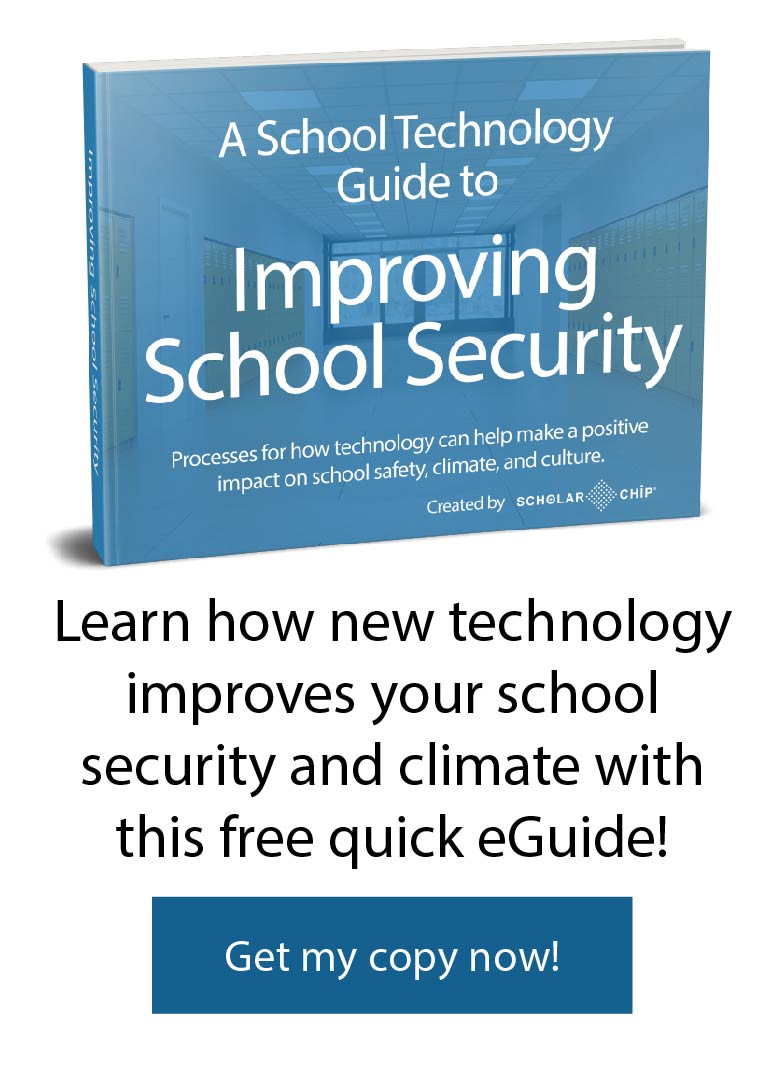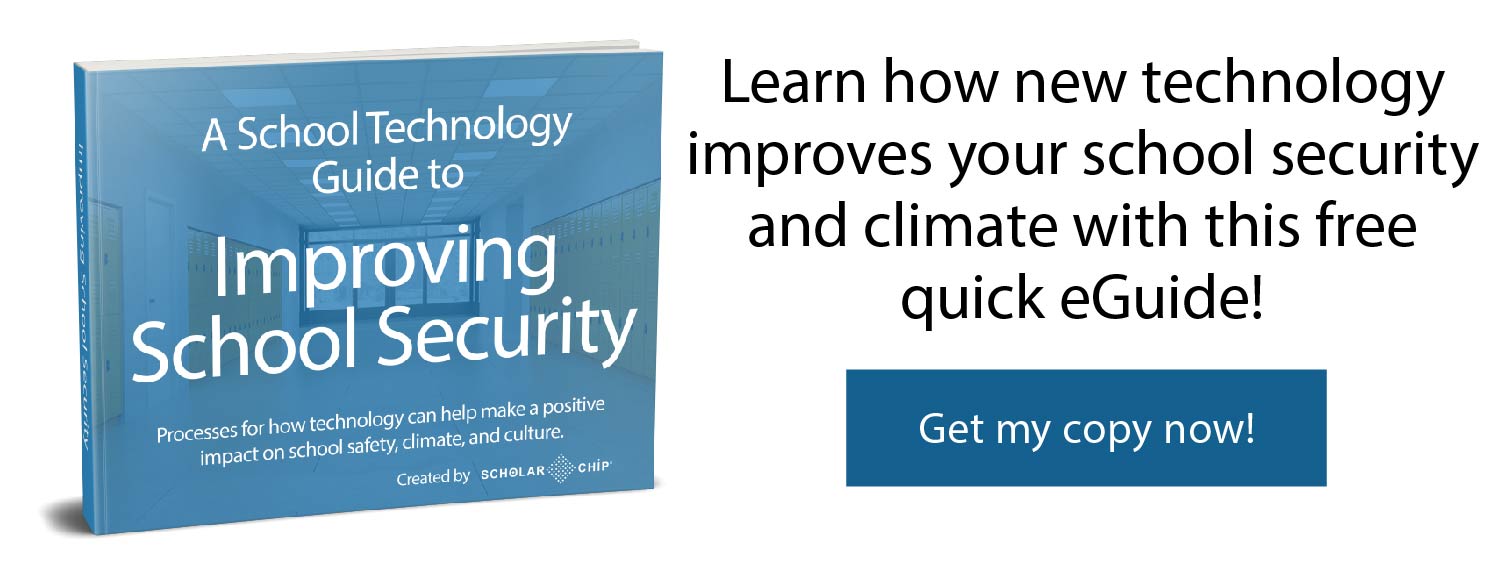It’s imperative to understand the impact in developing and promoting proactive safety models that support integration across school campuses. In December 2018, the Federal Commission on School Safety released its final Report. The Commission, formed in response to the Marjory Stoneman Douglas High School shooting, included a list of school shooting incidents to illustrate the extent of school violence in the United States. The list, which spans four decades, names nearly three dozen incidents. The Commission notes their list is not complete.
These incidents capture national media attention because they are unexpected and shocking. In their wake, districts across the nation have attempted to “harden” their buildings with surveillance cameras, metal detectors, ballistic grade doors and windows and armed security personnel. However, statistically, violent acts that cause mass injuries and loss of life in schools are rare. Most districts will never have to face gun violence. Far more common are incidents of bullying, fighting, missing students and the presence of unauthorized people, possibly non-custodial parents or individuals on the sex offender registry, in school buildings. Overt security measures, such as armed officers on campus, may not secure a school against these threats, and they create an uneasy environment that runs counter to a school’s core mission.
Secretary of Education and Commission Chair Betsy DeVos notes in her introduction to the report that, “…there is no single policy that will make our schools safer. What will work for schools in Montana will be different than what will work for schools in Manhattan.” The Commission’s report suggests that resources could be better spent on a more comprehensive approach that addresses prevention by building a culture of connectedness, conducting threat assessments, and establishing a security team to develop and implement security plans. This type of multi-faceted security plan requires integrated systems for collecting, analyzing and sharing data. Recognizing this, school leaders have attempted to upgrade systems by integrating new technology with legacy systems as budgets allow.
The Evolution of Information Systems in Education
Spiral-bound grade books have gone the way of filmstrip projectors and Ditto machines. Electronic attendance logs and grade books are the norm in 21st Century schools, yet these digital solutions usually require educators log into different systems for different tasks. Student behavior reports are a third, separate system, often existing in manila file folders in a guidance or CSE office. Student directory information – addresses, birthdates, family information, class schedules, etc. — may be in another, unconnected database. Administrative tasks, such as staff scheduling, inventories and budgeting, may utilize yet another system. Building security measures, including control of building and classroom access, may be separate from all these. These systems don’t communicate with each other, and, as a result, users miss valuable insights.
Challenges of Working with Outdated Systems
The need to work with legacy systems is a fiscal reality for most districts, but disparate and outdated systems come with qualitative costs. Old, unwieldy user interfaces threaten data integrity as users, often teachers who are pressed for time, have difficulty entering data correctly and in a timely manner. Disparate systems make it difficult to generate the comprehensive reports needed for data-driven decision-making. For example, a student’s attendance record may be critical to understanding behavior issues and academic performance, yet if these data sets are not automatically collated, this understanding may be missed, particularly when looking at the span of a student’s academic career.
Legacy systems that require manual entry of information lack the ability to present data in real time. This is a substantial security risk. When faced with a threat or other emergency, first responders and school administrators need to know who is in the building and have instant, remote access to any relevant information concerning students. Additionally, cybersecurity threats are evolving, and hackers prey on systems with older algorithms that have known vulnerabilities such as inadequate password storage.
Software Integration Solutions
The newest technology uses software integration to combine student information, administrative functions, attendance records, behavior management and building security systems. Members of the school community are connected to the system with Smart ID cards. Students may “tap” a card reader to mark their attendance. They may use their cards to check out a library book or pay for lunch in the cafeteria. These functions may be combined with behavior management software for a comprehensive Platform that follows students throughout their school years and facilitates the recording and monitoring of behavior, interventions and progress.
Administrators may manage all these services and access real-time data from an administrator dashboard. They can control building access, set alerts, view cafeteria purchases and manage student, staff and volunteer information. These portals come with powerful reporting functions allowing school leaders, with just a few clicks, to create filtered reports and submit information to state and federal agencies. Adding visitor management systems and mobile monitoring creates a comprehensive security system. Vendors and other visitors may be identified before allowed access, and administrators have real-time data on who is in the building at any one time.
All information is securely stored in the cloud, not on ID cards. Special actions may be incorporated into the system to meet the unique needs of a student. For example, a parent may request an email alert when their child reports to school in the morning.
Advantages of Integrated Software Systems
With data centrally located, school leaders may produce comprehensive, actionable reports with complete information, filtering data as necessary. Tasks such as taking attendance are automated and recording grades and entering notes on student behavior streamlined, reducing the likelihood that human error will corrupt data. With integrated software systems, IT personnel do not have to physically visit school classrooms, computer labs and offices to bring computers up to date. Data may be repaired, updated and secured remotely. Additionally, integrated systems may open communication channels between parents and the school with the ability to automate messages via phone, text or email. Overall, these systems save labor and streamline tasks, making them cost-efficient.
Software Integration and Building Security
Incidents of school violence often seem to erupt spontaneously leaving the impression they cannot be predicted or prevented. Research conducted by the National Threat Assessment Center finds this is not true. Survivor surveys make it clear that most attackers indicate, in some way, their intentions to do harm. An integrated system can reveal patterns in behavior and attendance that indicate a volatile situation and serve as a red flag to potential danger.
With behavior management techniques and integrating an Alternate Behavior Educator program, student behavior can be monitored and tracked efficiently. Students who are potential red-flags can receive automated referrals for interventions, reducing the number of potential threats. The attendance and door access functions of Smart ID cards combined with a Visitor Management system creates a strong level of school security as well for students and staff. Unauthorized people, those who may pose a threat to students and staff, are kept out. With the swipe of their state identification card, the school will be able to run a check through a sex-offender database. There is also identity management through another security measure system that can extend to the school bus and mobile devices for field trips and extracurricular activities on campus, far more accurate and secure than attendance recorded with a paper-based system.
It’s important to consider upgrading to a school safety system that integrates different programs may be done incrementally as funding allows. Unlike legacy systems that too soon can become obsolete, these systems are designed to be expandable. The initial hardware, software and training costs will be recouped in the long term with improved efficiency and accuracy through automation. Unlike armed guards and metal detectors, the optics of which do not fit well with a school’s mission, the security features of integrated software systems, while strong, remain mostly behind the scenes. This allows the school community to focus on learning and success, creating a positive school climate that in turn makes for more secure schools.
ScholarChip is an all-in-one, platform solution to help reduce school threats and address the important issues surrounding school safety and your software integration. Data from students, faculty, and stakeholder are leveraged to manage school access, attendance, and behavior management through the platform tools to increase safety and promote the campus climate schools are looking for.
If you are interested in learning more about software integration for your school and how ScholarChip can help you achieve higher school security, schedule a 1-on-1 walkthrough with one of our specialists today!


